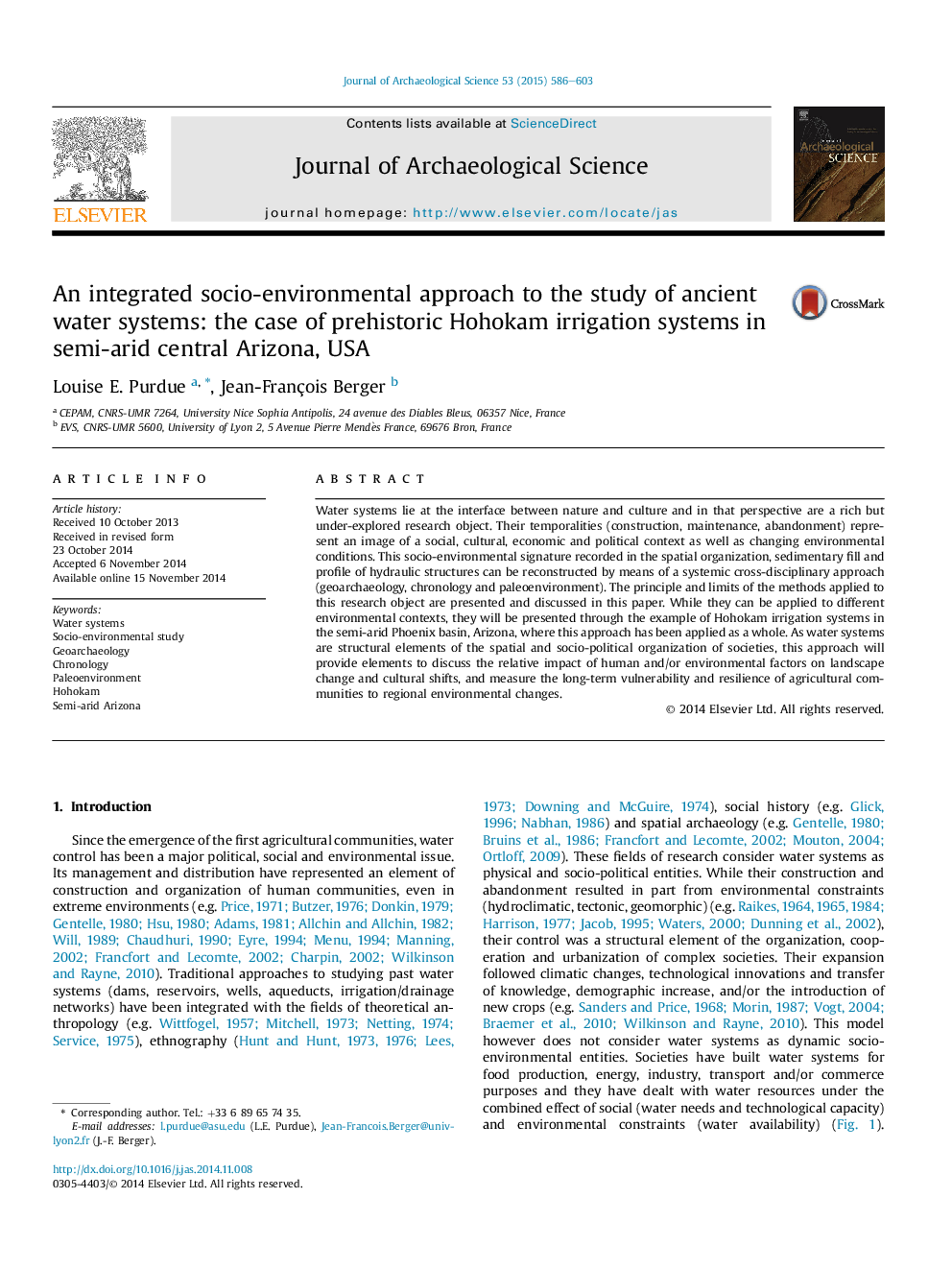| Article ID | Journal | Published Year | Pages | File Type |
|---|---|---|---|---|
| 7442731 | Journal of Archaeological Science | 2015 | 18 Pages |
Abstract
Water systems lie at the interface between nature and culture and in that perspective are a rich but under-explored research object. Their temporalities (construction, maintenance, abandonment) represent an image of a social, cultural, economic and political context as well as changing environmental conditions. This socio-environmental signature recorded in the spatial organization, sedimentary fill and profile of hydraulic structures can be reconstructed by means of a systemic cross-disciplinary approach (geoarchaeology, chronology and paleoenvironment). The principle and limits of the methods applied to this research object are presented and discussed in this paper. While they can be applied to different environmental contexts, they will be presented through the example of Hohokam irrigation systems in the semi-arid Phoenix basin, Arizona, where this approach has been applied as a whole. As water systems are structural elements of the spatial and socio-political organization of societies, this approach will provide elements to discuss the relative impact of human and/or environmental factors on landscape change and cultural shifts, and measure the long-term vulnerability and resilience of agricultural communities to regional environmental changes.
Related Topics
Physical Sciences and Engineering
Materials Science
Materials Science (General)
Authors
Louise E. Purdue, Jean-François Berger,
